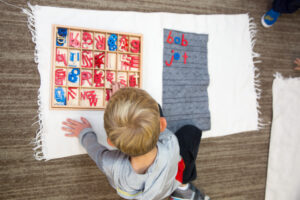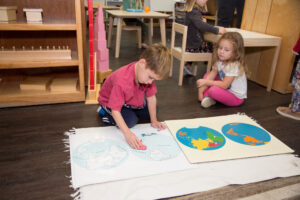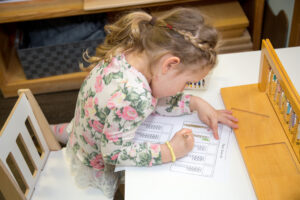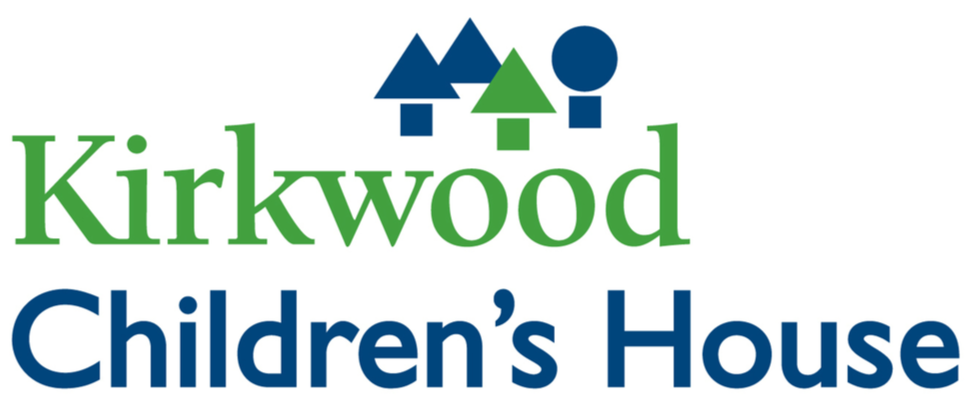Developmental Areas
Practical Life

Practical life exercises include important tasks of needed in daily life, such as washing dishes, flower arranging, and learning to button and snap. Other exercises are specifically intended to foster “grace and courtesy, ” through which children develop understanding of themselves in relation to others. Through the Practical Life exercises, children establish their ability to concentrate, coordinate their movements, and achieve self-confidence by experiencing the joy of “I did it myself.”
Sensorial

Sensorial materials involve training and developing children’s sense of touch, sight, hearing, smell, and taste. By practicing, children sharpen their ability to differentiate between various shapes, sounds, smells, colors, textures, and tastes. The result is a heightened awareness of the physical environment and deepened powers of observation that are highly useful for future academic explorations.
Language

Montessori builds on children’s remarkable natural capacity for language development. Students are exposed to rich language in all areas of the classroom. This phonetic approach leads to reading words, phrases and sentences, and ultimately to reading books. The language materials appeal to all styles of learners: auditory, visual, and kinesthetic. Children are also exposed to the mechanics of both manuscript and cursive writing, parts of speech, and grammatical concepts.
Sciences/Cultural

Cultural subjects, such as geography, history, biology, botany, zoology, art, and music are an important part of the Montessori classroom. Children use the Montessori materials to gain understanding and appreciation of the world around them. Throughout the school year, the seven continents are introduced through hands-on artifacts cultural celebrations, and culinary traditions.
Mathematics

The Montessori math program ranges from simply learning to count and recognize numerals to hands-on work with the decimal system and place value (units, tens, hundreds, thousands, etc.). By working with these lessons, children also learn the process of each mathematical operation: addition, subtraction, multiplication, and division. Concrete materials help children develop a deep level of understanding of mathematical concepts.
